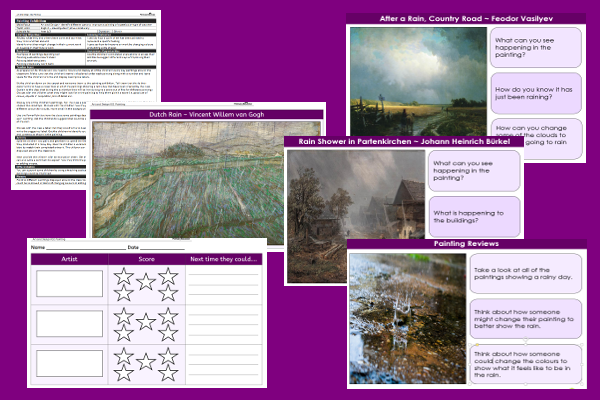Lesson Six – Painting Exhibition

This art and design teaching pack for Key Stage One gets the children to identify and record some of the different ways that can be used to improve a painting showing a landscape on a rainy day.
The class can explain how to improve the use of colours and brush strokes in artwork to evoke ideas and feelings to show what it is like to be outside in the rain.
Download this teaching pack including a lesson plan, classroom activities and an interactive presentation to teach the children to identify and record some of the different ways that can be used to improve a painting showing a landscape on a rainy day
Activities in this teaching pack include display posters to evaluate paintings depicting the rain to describe colour shades and brush techniques and a template to review artwork of a landscape affected by the rain and suggest improvements to the colour shades and brush techniques.
The interactive presentation gets the children to explore different ways of improving a painting of showing a landscape on a rainy day.
This lesson is part of a art and design scheme of work to get the children to practise different techniques of painting scenes depicting a specific type of rain to simulate natural phenomena in a range of different landscapes. There are teaching activities for shared learning, differentiated worksheets to support independent learning and interactive presentations to introduce concepts and key skills.
-

Maths Measurement Assessment
Assess abilities in estimating, measuring and comparing a range of different measurements for length, mass and capacity
-

Family Life
Investigate and reflect on some of the special events and experiences that might happen in the life of a family
-

Final Sounds Word Guess
Practise playing some guessing and matching games to identify the spelling and meaning of words with different final sounds
-

Building Reports
Explore how to collect facts and information to work with when composing and presenting non-chronological reports about buildings that can be found in the local area
